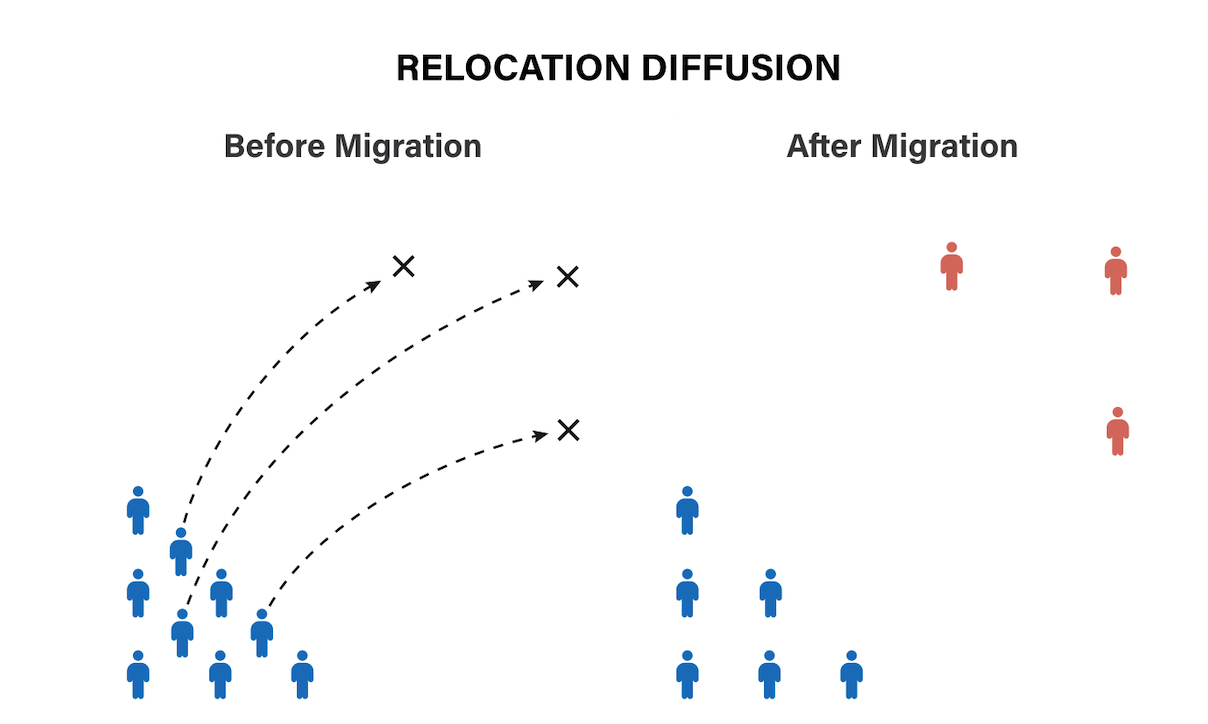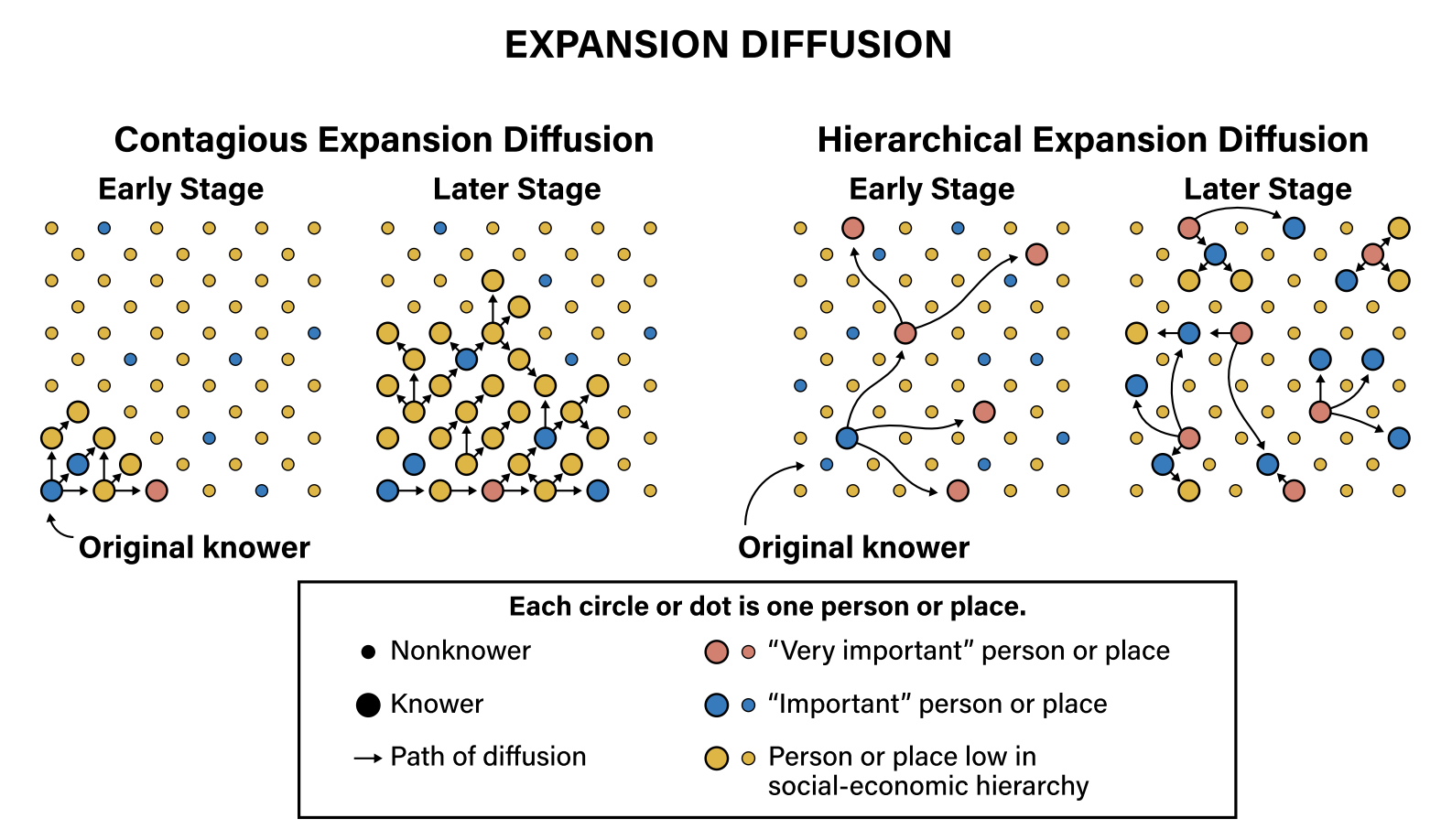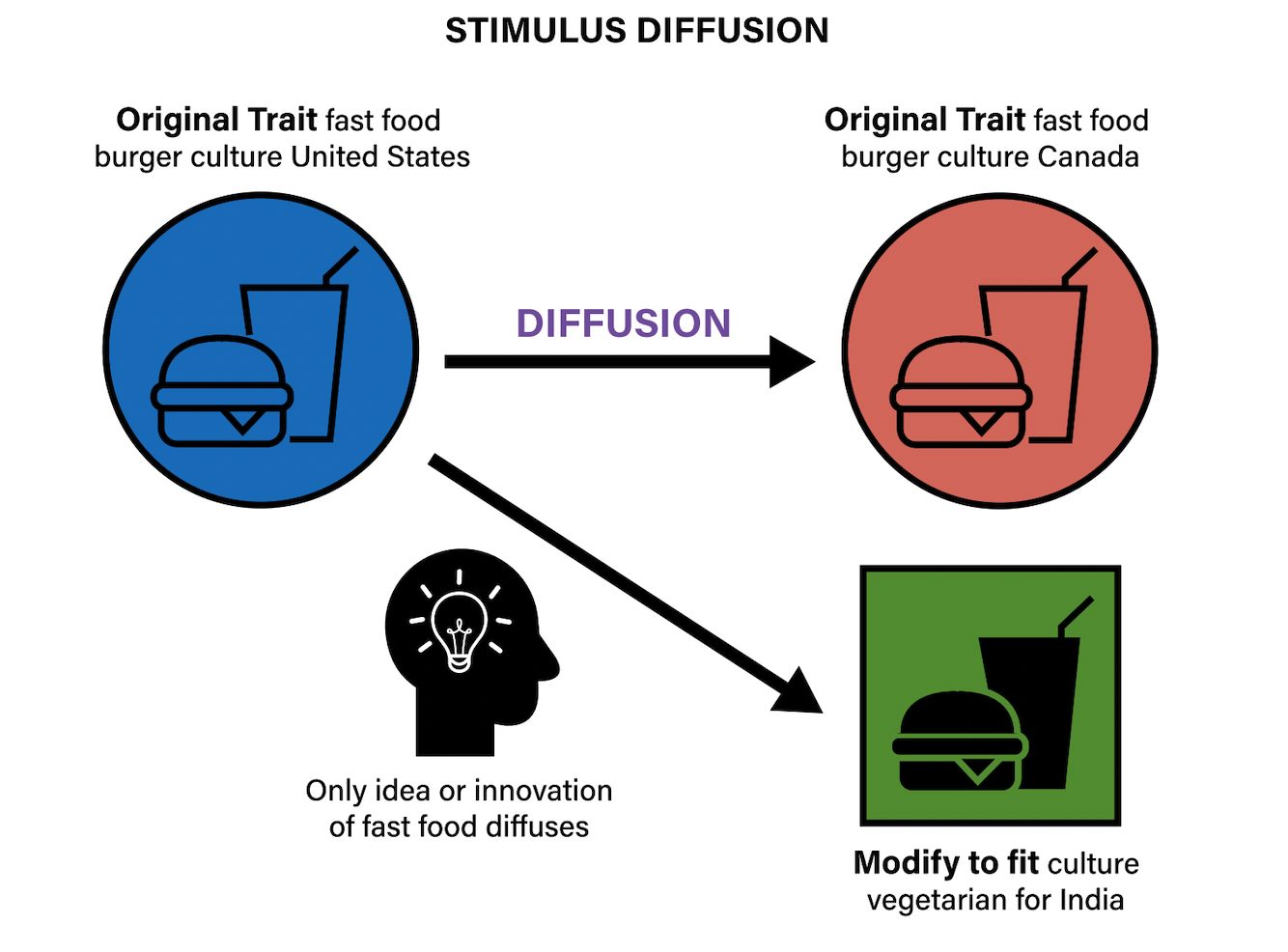Cultural Diffusion
relocation diffusion
Expansion Diffusion
hierarchical
reverse-hierarchical
contagious
stimulus
Cultural Diffusion Barriers
cultural
political
geographic
Cultural Diffusion Concept
hearth

People study deadly diseases in many ways. Doctors focus on treating patients. Economists focus on the supply for medicines. Geographers focus on spatial distribution, including how a disease diffuses outward from its hearth.
The influenza outbreak of 1918-1919, immediately after World War I, diffused in the United States from east coast cities. Troops returning from Europe either carried the virus or contracted it in a port. Then, as troops traveled home, they spread the disease throughout the country. The virus killed more than 50 million people worldwide, more than double the battle deaths in the war.
Types of Diffusion
The spread of information, ideas, behaviors, and other aspects of culture from their hearths to wider areas is known as diffusion. The two major forms of cultural diffusion come through exchanges between people. Some exchanges occur when people migrate from one place to another. Others result more indirectly, as people share ideas.
The spread of disease is one example of diffusion. Outbreaks of Ebola in West Africa in 2013, the Zika virus in South America in 2015, and COVID-19 in 2020 threatened death and serious illness. However, using geospatial medical data and geographic reasoning, scientists had learned how to combat diffusion
of diseases. Coordinated global and national public health efforts prevented death on the scale of the 1918-1919 flu outbreak.
Relocation Diffusion
One main type of diffusion is relocation diffusion, the spread of culture and/or cultural traits by people who migrate and carry their cultural traits with them A small-scale example is the spread of pizza, which Italian immigrants brought to the United States in the late 19th century. A large-scale example is the spread of European culture around the world starting in the 1500s.
At times, the areas where migrants settle continue a trait after it has lost its influence in its hearth. The people in the modern world who pronounce English most like Shakespeare did in the 1500s live in Appalachia (from southern New York to northern Alabama), not in England. Disco music evolved in the United States in the 1970s but remained popular in Egypt long after its popularity faded in the United States.

Expansion Diffusion
The spread of cultural traits outward through exchange without migration is called expansion diffusion. Unlike relocation diffusion, expansion diffusion requires a different person to adopt the trait. It occurs in many ways.
Contagious Diffusion
Contagious diffusion occurs when a cultural trait spreads continuously outward from its hearth through contact among people. For example, the hearth for blues music is the southern United States. As musicians outside the hearth heard the music, they began to play it themselves. Blues slowly spread northward and reached cities such as St. Louis, Chicago, and New York.
Hierarchical Diffusion
Hierarchical diffusion is the spread of culture outward from the most interconnected places or from centers of wealth and influence. Cultural traits spread first from one powerful person, city, or powerful class to another powerful person, city, or social class. Eventually the trait could be shared with other people, smaller cities, different social classes, or less-developed countries Unlike contagious diffusion, hierarchical diffusion may skip some places while moving on to others. Most popular culture, such as music, fashion, and fads, follows the hierarchical diffusion path.
Cell phone technology demonstrates how hierarchical diffusion works. When cell phones first appeared in the 1980s, they were expensive. Only wealthy people in large cities in developed countries owned them. As cell phone networks grew and cell phones became mass-produced, they eventually spread to a wider market. Today, cell phones have diffused throughout the world.
At times, a trait diffuses from a group of lower status to a group of higher status, in a process called reverse hierarchical diffusion. For example, in the United States in the 1940s through the 1960s, people commonly considered tattoos to be a symbol of low social status. Tattoos were associated with three types of places: seaport towns (among dockworkers and sailors), military bases, and prisons. Since the 1970s, the custom of getting tattoos has diffused throughout many segments of society and geographic areas. Some reverse hierarchical diffusion goes from small, rural communities to larger urban areas. Walmart stores diffused from rural Arkansas to small cities and now nearly every city in the United States.

Stimulus Diffusion
The process of stimulus diffusion is when an underlying idea from a culture hearth is adopted by another culture but the adopting group modifies or rejects one trait.

For example, Hindus in India adopted the practice of eating fast food, but they rejected eating beef because doing so would violate their Hindu beliefs. So, they adapted the custom by making vegetarian and other non-beef types of burgers. Five centuries ago, Europeans adopted the use of lightweight, beautifully decorated porcelain dishes that they obtained from China, but they rejected the high cost of importing the dishes. So, when people in Germany found deposits of the right type of clay to make their own porcelain, they modified the process of obtaining porcelain by making it in Europe.
